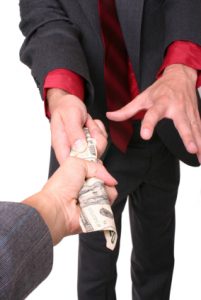Landlord-tenant law in Suffolk County, New York, continues to evolve, reflecting broader state-level reforms and local ordinances aimed at balancing the rights and responsibilities of landlords and tenants. As of 2025, several key trends are shaping the legal landscape, driven by legislative changes, tenant protections, and judicial practices. These trends impact rental agreements, eviction processes, and anti-discrimination measures, creating a dynamic environment for property owners and renters alike.
One significant trend is the continued influence of New York’s Housing Stability and Tenant Protection Act (HSTPA) of 2019, which has reshaped landlord-tenant dynamics across the state, including Suffolk County. The HSTPA imposes strict limits on rent increases for rent-stabilized units, caps fees, and enhances tenant protections against arbitrary evictions. In Suffolk County, where rent stabilization applies in certain communities, landlords must adhere to guidelines set by the state’s Division of Housing and Community Renewal (DHCR). For instance, landlords can only claim up to three Individual Apartment Improvements (IAIs) within a 15-year period, with costs capped at $15,000, and these increases are temporary, expiring after 30 years. This ensures tenants are not burdened with excessive rent hikes tied to renovations.
Another notable development is the implementation of Good Cause Eviction (GCE) laws, effective in New York City and potentially applicable to other municipalities like Suffolk County by 2025. GCE prevents landlords from evicting tenants without a specified “good cause,” such as non-payment of rent or lease violations. A rebuttable presumption exists that rent increases exceeding 5% plus the Consumer Price Index (or 10% of the existing rent, whichever is less) are unreasonable, requiring landlords to justify higher increases in court. While primarily enforced in NYC, Suffolk County landlords should monitor local adoption, as it could limit their ability to terminate leases without cause, especially for market-rate apartments.
Anti-discrimination protections remain a critical focus in Suffolk County. Landlords with buildings containing three or more units cannot refuse to rent based on a tenant’s lawful source of income, such as Section 8 vouchers or public assistance. Additionally, federal and state laws prohibit discrimination based on race, gender, disability, or other protected characteristics. Suffolk County’s Human Rights Commission provides a local avenue for tenants to file grievances if they suspect discriminatory practices, reinforcing fair housing standards.
The eviction process in Suffolk County is also under scrutiny, with courts emphasizing procedural compliance. Evictions for non-payment of rent require a 14-day Notice to Pay, while holdover proceedings (e.g., lease expiration) mandate 30 to 90 days’ notice, depending on tenancy length. Courts in Suffolk County are known to favor landlords in disputes, but tenants can delay proceedings by requesting adjournments or legal representation, often provided pro bono by organizations like Nassau/Suffolk Law Services. Illegal lockouts or utility shutoffs are strictly prohibited, and tenants can sue for triple damages in such cases.
Finally, lease requirements in Suffolk County mandate that landlords offer written leases of at least one year for buildings with three or more units, enhancing tenant security. This trend underscores the county’s commitment to formalizing rental agreements to prevent disputes.
In conclusion, Suffolk County’s landlord-tenant laws in 2025 reflect a tenant-friendly framework, with robust protections against unfair rent increases, discriminatory practices, and unjust evictions. Landlords must navigate these regulations carefully, while tenants benefit from increased legal recourse and support. Staying informed through resources like the Suffolk County Bar Association or local housing services is essential for both parties to thrive in this evolving legal landscape.
For more information, or if you or someone you know needs assistance with a landlord-tenant matter in Suffolk County, New York, please contact landlord-tenant attorney Jim Clark.


 The Department of Labor (DOL) has issued its final rule regarding the relationship between franchisor and franchisee, with respect to possible joint employment status under the Fair Labor Standards Act (FLSA). Namely, they have clarified that the existence of a franchising relationship does not make the franchisor more or less likely to be a joint employer. Instead, they have affirmed a set of criteria that, considered as a whole, is determinative of whether joint employment exists or not.
The Department of Labor (DOL) has issued its final rule regarding the relationship between franchisor and franchisee, with respect to possible joint employment status under the Fair Labor Standards Act (FLSA). Namely, they have clarified that the existence of a franchising relationship does not make the franchisor more or less likely to be a joint employer. Instead, they have affirmed a set of criteria that, considered as a whole, is determinative of whether joint employment exists or not.  The Fifth Circuit of the United States Court of Appeals has
The Fifth Circuit of the United States Court of Appeals has  An interesting question has arisen as to who can collect no-fault benefits under New York law. New York regulations provide that only the patient and the provider can sue or arbitrate for medical benefits under the no-fault law. The question that arises is what happens when the provider assigns his medical benefits to a finance company or factor who purchases the accounts receivables or obtains a lien against them? (Learn more about
An interesting question has arisen as to who can collect no-fault benefits under New York law. New York regulations provide that only the patient and the provider can sue or arbitrate for medical benefits under the no-fault law. The question that arises is what happens when the provider assigns his medical benefits to a finance company or factor who purchases the accounts receivables or obtains a lien against them? (Learn more about  When you decide to sue, before you make that first move, you need to think through where you are going to file the lawsuit. Selecting a forum may have a major impact on both the costs and the results of the litigation. In many litigations there is more than one forum in which the lawsuit can be started.
When you decide to sue, before you make that first move, you need to think through where you are going to file the lawsuit. Selecting a forum may have a major impact on both the costs and the results of the litigation. In many litigations there is more than one forum in which the lawsuit can be started. In deciding whether or not to sue there are three important considerations, and without all three a lawsuit generally cannot succeed: (1) there must be a liability (or a basis for getting relief); (2) there must be damages (and under New York law damages are sometimes not easy to prove and may require expert testimony unless it is plain and easy to calculate); and (3) there must be a “pocket” or source of funds from the parties who are liable for the damages, to pay a judgment.
In deciding whether or not to sue there are three important considerations, and without all three a lawsuit generally cannot succeed: (1) there must be a liability (or a basis for getting relief); (2) there must be damages (and under New York law damages are sometimes not easy to prove and may require expert testimony unless it is plain and easy to calculate); and (3) there must be a “pocket” or source of funds from the parties who are liable for the damages, to pay a judgment. The Health Care Reform Law commits the government to more aggressive efforts to find and prosecute Medicare fraud. Under the new law, funding will be increased to aid those efforts. The number of Medicare Fraud investigative offices across the country will double, so the agency will have the people and resources to address this serious problem.
The Health Care Reform Law commits the government to more aggressive efforts to find and prosecute Medicare fraud. Under the new law, funding will be increased to aid those efforts. The number of Medicare Fraud investigative offices across the country will double, so the agency will have the people and resources to address this serious problem.  The recent fraud allegations against Goldy for their scheme with John Paulson are enough to turn one’s stomach. It’s not really any different than a coach betting on the opposing team and then playing only his second- and third-string players.
The recent fraud allegations against Goldy for their scheme with John Paulson are enough to turn one’s stomach. It’s not really any different than a coach betting on the opposing team and then playing only his second- and third-string players.